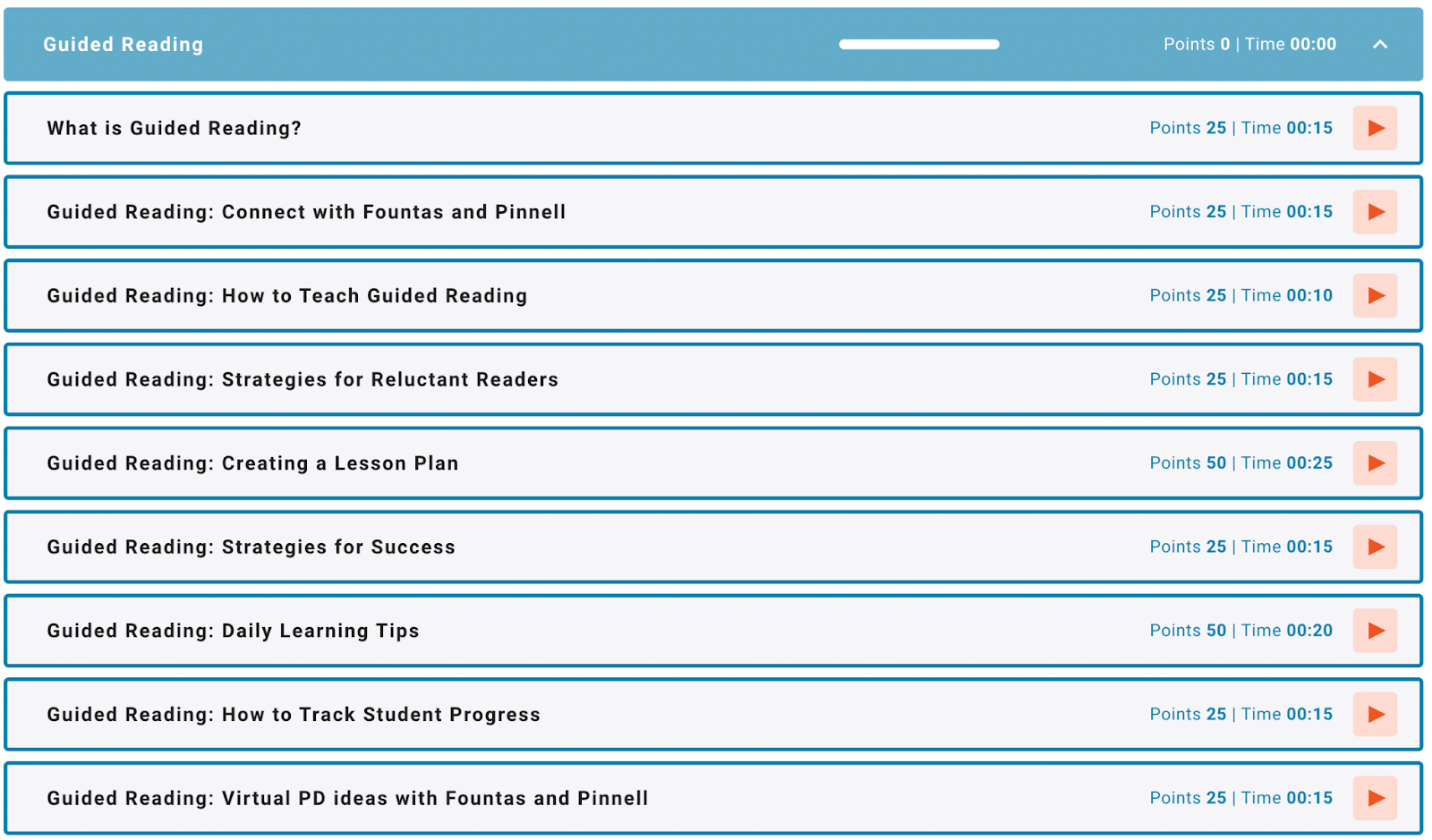Quick Tip Wednesday: How to Set Up a Gratitude Month
Welcome back to Quick Tip Wednesday!
6 min read
Damon Torgerson : Aug 23, 2022 5:00:00 PM

“Reading is to the mind what exercise is to the body.” ~Joseph Addison
There is no doubt that reading and learning go together. Textbooks are a staple of every classroom and both teachers and students rely on books to convey and absorb information at every grade level.
At Alludo, we have curated an extensive catalog of courses to help teachers with their professional development, and that includes many courses related to guided reading activities. Guided reading can help students process what they read at a level that’s appropriate for them. With that in mind, here are six reasons to include guided reading activities in your lesson plans.
Guided reading is an instructional approach designed to help students improve their reading skills by meeting them where they are and guiding them through a series of activities to improve their reading comprehension. Guided reading is designed to be flexible and can be extremely useful for helping students study and process texts.
A guided reading lesson plan is, at its simplest, a lesson plan that includes guided reading. Here are some of the characteristics of guided reading.
Students work in small groups based on their reading levels at a particular point in time. Because students’ abilities and competencies will change over time, a guided reading group is not static. Teachers may group and regroup students to make sure that students are grouped appropriately.
The teacher chooses a text based on the students’ reading level using the Fountas & Pinnell Text Level Gradient, which scores texts from A (for beginner readers) to Z+ (for the most advanced students.) The teacher provides guidance on reading the chosen text. Guidance may include language structure, vocabulary, themes, and other elements of the material the students are reading.
During a guided reading lesson, students may take turns reading out loud or read the text independently. They may discuss it among themselves as they read using the guidelines provided by their teacher.
After the students have read the entire text, the teacher provides teaching points to help the readers discuss and understand the assigned material. The teacher is also responsible for responding to individual student questions and providing support for their individual strengths and needs.
There are several types of guided reading activities that teachers can choose from and a recommended structure for discussion.
There are three key elements of any guided reading activity or lesson plan:
/AL_11-Blog02-2.jpeg?width=450&name=AL_11-Blog02-2.jpeg)
The texts and composition of student groups will vary but all guided reading activities should follow this basic format.
There are three categories of guided reading activities, and each has its purpose in the classroom.
Prediction
Prediction requires students to use their personal experiences and knowledge to predict what will happen in a story. Teachers may ask students to make educated guesses about a text’s content before they read it using cues from the title, cover blurb, cover illustration, genre, and other elements of the material.
As students read, they may continue to make predictions. Teachers may guide students by prompting them to predict upcoming events or story elements at the end of a paragraph, a page, or a chapter. This process can hone students’ ability to recognize foreshadowing and other characteristics of storytelling.
Clarification and Questioning
Clarification and questioning encourages students first to identify challenging elements in the text being read and then to get them to a better understanding of those elements using a variety of questioning and clarification techniques. This category of guided reading can be helpful for learning new vocabulary words and concepts.
Teachers can encourage students to pinpoint areas where they need more help by providing clarification prompts. Here are some examples:
Filling in the blanks may take some of the apprehension away from students admitting they aren’t sure about something in the text. Once students have identified their challenges, they can use several techniques to elucidate and clarify the elements in question. For example, they might first try to understand a new word using contextual clues, then look it up in the dictionary, then come up with other situations where the word might be used. This process can help to improve students’ recall and comprehension of what they learn.
Summarizing
Summarizing is exactly what it sounds like. It encourages students to restate what they have read in their own words, including the most relevant parts of the story or text and eliminating those things that are not essential to understanding it. Here are some questions to ask to help students with summarization:
Questions like these can help students integrate what they read in the text into their personal knowledge and can increase comprehension by helping them sift through information and identify things that are important to understand and remember.
Now, let’s review the reasons that you should include guided reading in your lesson plan:
/AL_11-Blog02-3.jpeg?width=450&name=AL_11-Blog02-3.jpeg)
These six benefits illustrate how useful guided reading activities can be in the classroom.
You already know that any guided reading activity requires the selection of texts at an appropriate level for each group of students. Here are some other materials and resources you’ll need in order to include guided reading in your lesson plans:
/AL_11-Blog02-4.jpeg?width=450&name=AL_11-Blog02-4.jpeg)
As you can see, you don’t need much to incorporate guided reading into the classroom.
At Alludo, we curate professional development content in a broad array of areas and topics to help teachers connect with their students and deliver optimal learning outcomes. Here’s how (and why) we do it:
With Alludo's Guided Reading mission with nine micro-learning activities. school districts can provide teachers with the instruction and tools they need to bring guided reading activities into their classrooms.

Guided reading lesson plans simplify the process of elevating student reading comprehension by providing teachers with a framework to meet students where they are and give them the individual guidance they need to improve their reading.
Experience personalized learning for all levels of educators with a free trial of Alludo’s professional development platform. You’ll enjoy:
.png)
Welcome back to Quick Tip Wednesday!

Mid-Year Reflection: Your Secret to a Stronger Second Semester
A great way to get your learners engaged in your Alludo program is by keeping the content in your program up-to-date and relevant. Rebecca has...